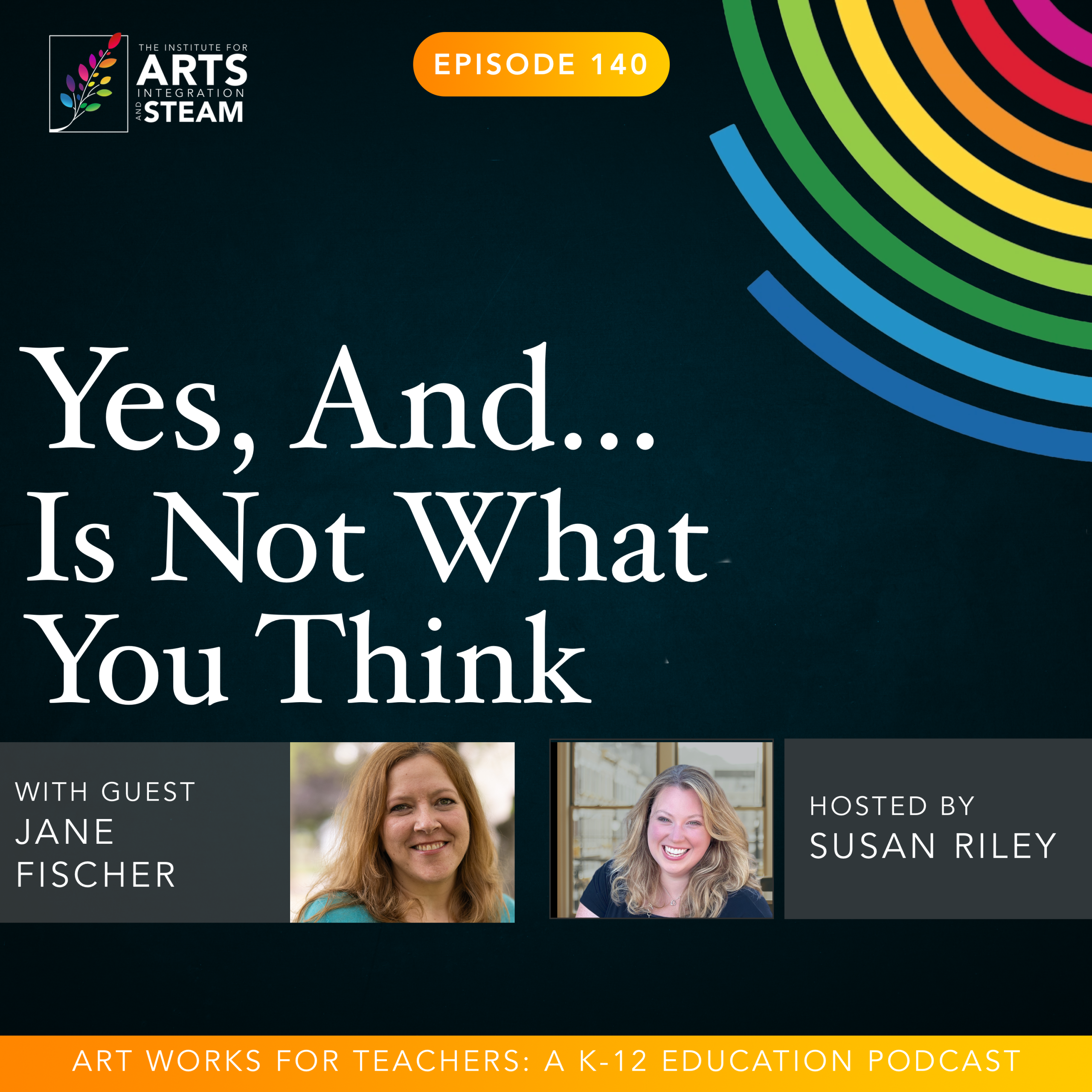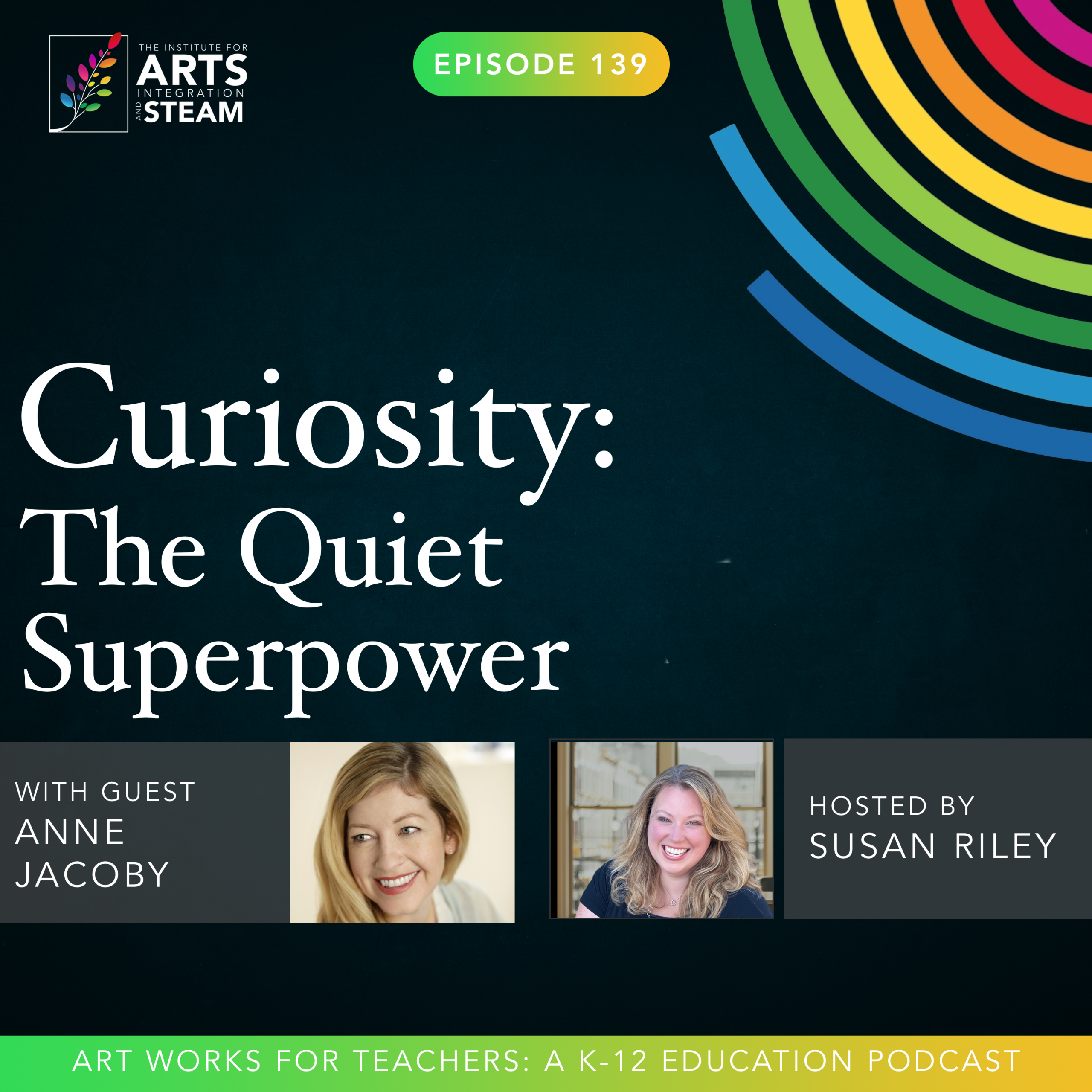ART WORKS FOR TEACHERS PODCAST | EPISODE 064 | 23:58 MIN
Design Thinking Strategies for the Holidays
Enjoy this free download of the Design Thinking strategies.
Many times, this involves the Design Thinking Process – but not necessarily in a traditional format. Today, I’m sharing with you my top 3 ways to rethink using Design Thinking Strategies for student engagement.
Get the Creative Juices Flowing
Before anything else, we need to practice getting the creative juices flowing. Sometimes, we can get stuck. Creative thinking and creative mindsets are two sides of the same coin. Creative thinking encompasses skills and processes that lead students toward a creative mindset. A creative mindset is a practice of leveraging creativity to continually grow and evolve. Think of a creative mindset as a muscle and creative thinking as the strategies needed to build that creative muscle.
There’s lots of ways to do this, of course. But for our purposes of getting students into this mindset, I have 2 strategies that work particularly well and some applications you might like to try:
- 1×5 Creative Thinking Strategy
- SpaceWalk Strategy
- Classroom Museums
- Learning Centers
- Artful Field Trips
- Learning Artifacts
Create Your Own Game
Once you’ve gotten students into a creative mindset, now it’s time to ramp it up and get them using that for a real-world application. One idea could be for students to create their own game. This is great around the holidays because it could be used for a gift, or it could be used as a way for students to consider other items they’d like to create. Once they have the process down, they can use it for anything.
One of our authors outlines this in a Design Thinking Game Challenge which I think is just great. Here’s how it works:
Key Steps:
- Day 1: Empathize
- Day 2: Define
- Day 3: Ideate
- Day 4: Prototype
- Day 5: Test
Using Story Structure for Creation
Finally, design thinking strategies aren’t limited to science, tech, engineering, or math content areas. You can use this same thinking muscle for the humanities. One example of that is with the Structure Your Story strategy.
According to Shonda Rhimes, most stories fall within a specific structure. You can use this framework to develop narrative and informational writing, as well as work through ideas, presentations and more. Here’s how this framework is organized:
Key Ideas:
- Based in 5 Acts, each with a specific prompt for response
- Used by scriptwriters and playwrights to keep the audience engaged
Hopefully, the ideas shared in this episode give you a jumping off point for your own hands-on project. I know it’s hard to feel like you have time for this kind of thing. But I promise you, your students will get excited and you can hit your curricular milestones. You can weave them into the project design so students are learning, creating, experimenting, and connecting all at the same time.
I’d love to hear your thoughts and questions about this topic. Remember, you can use the ask me anything button below to share with me your ideas and what’s bubbling to the surface for you. And if you are enjoying the show and know someone who could benefit from our discussions, please share the podcast with them. Together, we can chase the spark of our ideas and make a brighter future for everyone.
- Creative Thinking Activities with the 1×5 Strategy
- Design Thinking Game Strategy from Rich Stachon
- Spacewalk Strategy
- Structure Your Story Technique









